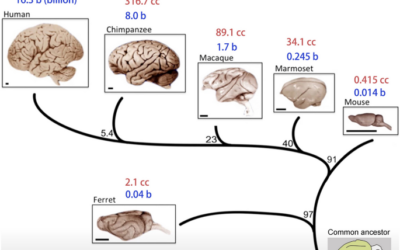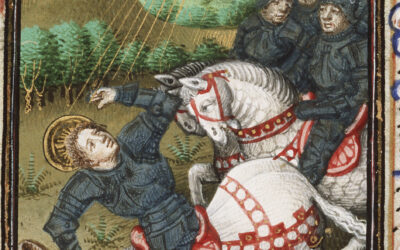The Psychology of the Arts and Crafts Movement

The Psychology of the Arts and Crafts Movement: Celebrating Craftsmanship and Simplicity
The Arts and Crafts Movement, which emerged in Britain in the late 19th century and quickly spread to other parts of the world, represented a rejection of the industrialized production and ornate aesthetics of the Victorian era. This movement, characterized by its emphasis on traditional craftsmanship, simple forms, and natural materials, had a profound impact on architecture, design, and the decorative arts. In this exploration, we’ll delve into the origins, characteristics, and psychological underpinnings of the Arts and Crafts Movement and its lasting influence on design and society.
Historical Context and Key Characteristics
The Arts and Crafts Movement was born out of a growing concern about the negative effects of industrialization on society, art, and labor. The movement’s leaders, such as William Morris and John Ruskin, advocated for a return to traditional craftsmanship and a more holistic approach to design and production.
Key features of the Arts and Crafts Movement include:
- Emphasis on hand craftsmanship and traditional techniques
- Use of simple, functional forms and minimal ornamentation
- Celebration of natural materials, such as wood, stone, and clay
- Incorporation of folk art and medieval-inspired motifs
- Focus on the unity of art and craft, and the designer as craftsman
- Promotion of social reform and the dignity of labor
- Rejection of industrial production methods and artificial materials
Cultural Context
The rise of the Arts and Crafts Movement coincided with a period of rapid industrialization and social change. The movement reflected a growing dissatisfaction with the dehumanizing effects of factory work, the decline of traditional skills, and the perceived lack of quality and authenticity in mass-produced goods. The Arts and Crafts ideology also aligned with other cultural trends of the time, such as the romanticization of nature and the past, and the growing interest in socialism and labor reform.
Technological Advances
While the Arts and Crafts Movement was, in many ways, a reaction against the mechanization of production, it also benefited from certain technological advances. Improvements in transportation and communication made it easier for ideas and designs to spread, and for artisans to collaborate and market their wares. Some Arts and Crafts practitioners also embraced modern technologies, such as electric lighting and central heating, as long as they were integrated in a way that was consistent with the movement’s values of simplicity and honesty.
Political Landscape
The political landscape of the late 19th and early 20th centuries, marked by the rise of socialism, labor activism, and women’s suffrage, had a significant impact on the development of the Arts and Crafts Movement. Many of the movement’s leaders were involved in socialist politics and saw their work as part of a broader struggle for social justice and equality. The emphasis on the dignity of labor and the value of craftsmanship can be seen as a reflection of these political ideals.
Key Innovators
Several influential figures shaped the philosophy and aesthetics of the Arts and Crafts Movement, including:
William Morris: British textile designer, poet, and socialist activist, considered the father of the Arts and Crafts Movement.
John Ruskin: British art critic and social thinker whose writings on the moral and social dimensions of art and labor inspired the Arts and Crafts Movement.
Charles Robert Ashbee: British designer and architect who founded the Guild and School of Handicraft, an important center of Arts and Crafts education and production.
Gustav Stickley: American furniture designer and publisher who popularized the Arts and Crafts style in the United States through his magazine, The Craftsman.
Related Architectural Styles
The Arts and Crafts Movement had a significant influence on architecture and gave rise to several related styles, including:
Craftsman: An American architectural style characterized by low-pitched roofs, wide eaves, exposed rafters, and a focus on natural materials and craftsmanship.
Bungalow: A simple, one-story or one-and-a-half-story house style that originated in India but was popularized in the United States and other countries as part of the Arts and Crafts Movement.
Prairie School: An American architectural style, associated with Frank Lloyd Wright and his contemporaries, that emphasized horizontal lines, flat roofs, and integration with the natural landscape.
Dialectical Materialist Perspective
From a dialectical materialist viewpoint, the Arts and Crafts Movement can be seen as a response to the contradictions of industrial capitalism. The movement emerged from the tension between the efficiency and productivity of mechanized production and the alienation and deskilling of the worker. The Arts and Crafts ideology sought to resolve this contradiction by reasserting the value of human labor and creativity in the production process.
Jungian Depth Psychology Analysis
Through the lens of Carl Jung’s analytical psychology, the Arts and Crafts Movement can be interpreted as an expression of several archetypes:
- The Artisan archetype, representing the pursuit of excellence and the mastery of one’s craft, is central to the movement’s emphasis on traditional skills and workmanship.
- The Sage archetype, embodying wisdom and the search for truth, is reflected in the movement’s rejection of artifice and its celebration of honesty and authenticity in design.
- The Innocent archetype, symbolizing simplicity, purity, and a connection to nature, is manifest in the movement’s use of natural materials and its embrace of simple, functional forms.
The Arts and Crafts Movement’s critique of industrial capitalism and its vision of a more just and fulfilling society could be seen as an expression of the Self archetype, representing the quest for wholeness and self-realization.
Ego Perspective: Assertions and Insecurities
The Arts and Crafts Movement asserted the primacy of human creativity and the value of traditional craftsmanship in the face of industrial mechanization. The movement projected an image of moral and aesthetic superiority, positioning itself as a bulwark against the perceived degradation of art and society.
However, the movement also revealed certain insecurities and contradictions. The celebration of hand craftsmanship and the rejection of mass production could be seen as a defensive reaction to the economic and social changes brought about by industrialization. The movement’s emphasis on simplicity and honesty in design sometimes masked a romanticized view of the past and a nostalgia for a pre-industrial way of life.
Lasting Influence, Criticisms, and Modern Context
The Arts and Crafts Movement has had a lasting influence on architecture, design, and the decorative arts. Its emphasis on craftsmanship, simplicity, and natural materials continues to inspire designers and consumers alike. The movement’s critique of industrial production and its advocacy for social reform also anticipated many of the concerns of later design movements, such as modernism and sustainability.
However, the Arts and Crafts Movement has also faced criticisms. Some have argued that the movement’s rejection of industrial production methods was elitist and impractical, and that its emphasis on hand craftsmanship made its products unaffordable for the masses. Others have pointed out that the movement’s romanticization of the past and its critique of modern society often ignored the realities of poverty and social inequality.
In the modern context, the Arts and Crafts Movement has experienced a resurgence of interest, particularly in the fields of interior design and artisanal production. The movement’s values of craftsmanship, authenticity, and sustainability resonate with many contemporary consumers who are seeking alternatives to mass-produced, disposable goods.
The legacy of the Arts and Crafts Movement lies in its recognition of the social and moral dimensions of design and production. As we grapple with the challenges of globalization, environmental degradation, and economic inequality, the movement’s vision of a more just and fulfilling society remains as relevant as ever.
Bibliography and Further Reading
- Crawford, A. (2004). C.R. Ashbee: Architect, Designer and Romantic Socialist. Yale University Press.
- Cumming, E., & Kaplan, W. (1991). The Arts and Crafts Movement. Thames & Hudson.
- Davey, P. (1995). Arts and Crafts Architecture. Phaidon Press.
- Harvey, C., & Press, J. (1991). William Morris: Design and Enterprise in Victorian Britain. Manchester University Press.
- Lambourne, L. (1980). Utopian Craftsmen: The Arts and Crafts Movement from the Cotswolds to Chicago. Van Nostrand Reinhold.
- Parry, L. (2005). Textiles of the Arts and Crafts Movement. Thames & Hudson.
- Pye, D. (1968). The Nature and Art of Workmanship. Cambridge University Press.
- Stansky, P. (1985). Redesigning the World: William Morris, the 1880s, and the Arts and Crafts. Princeton University Press.




0 Comments